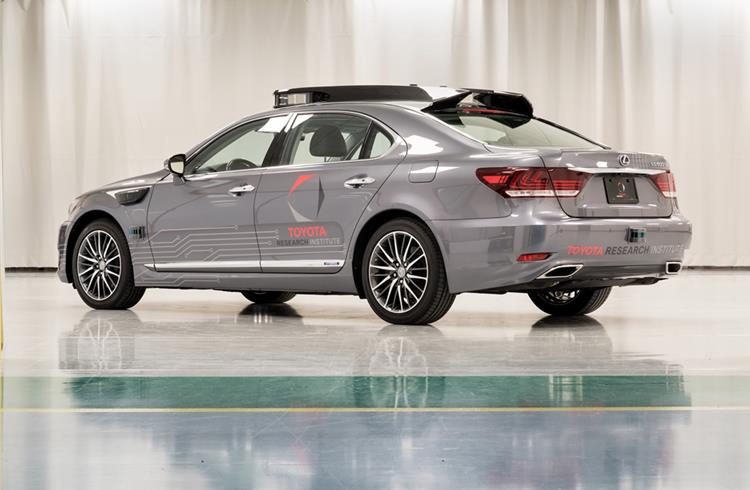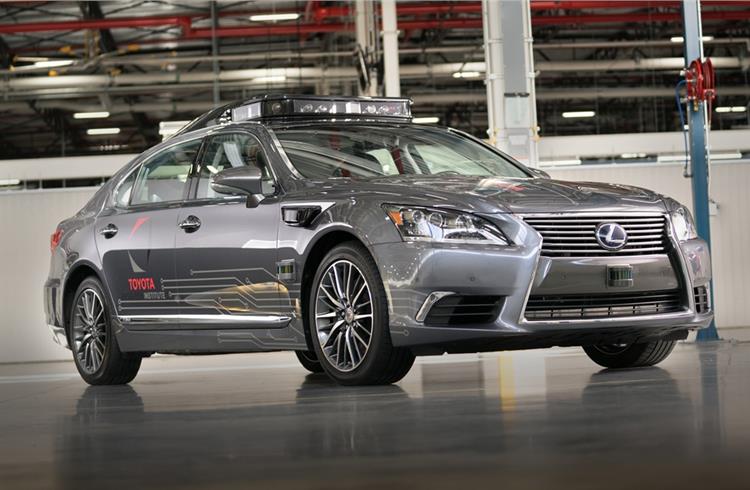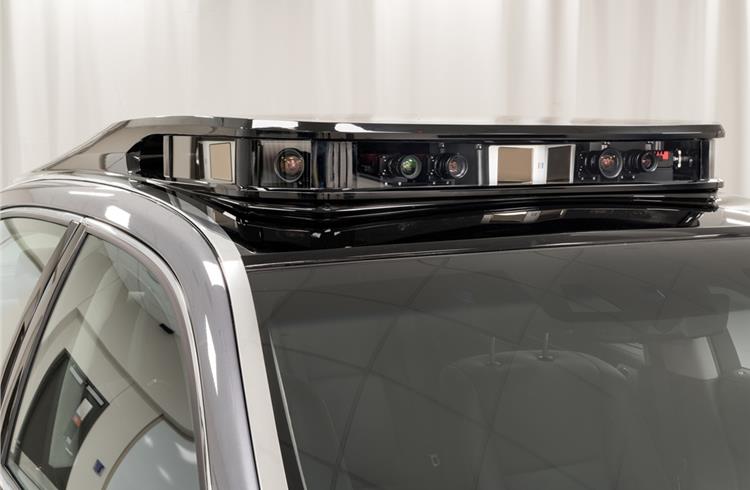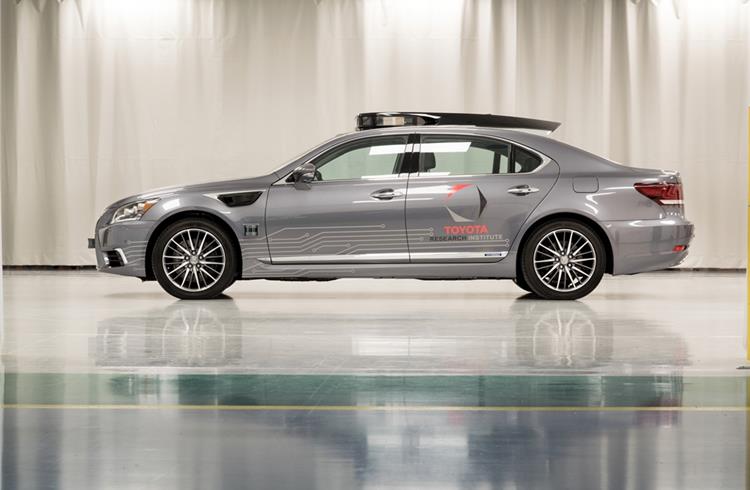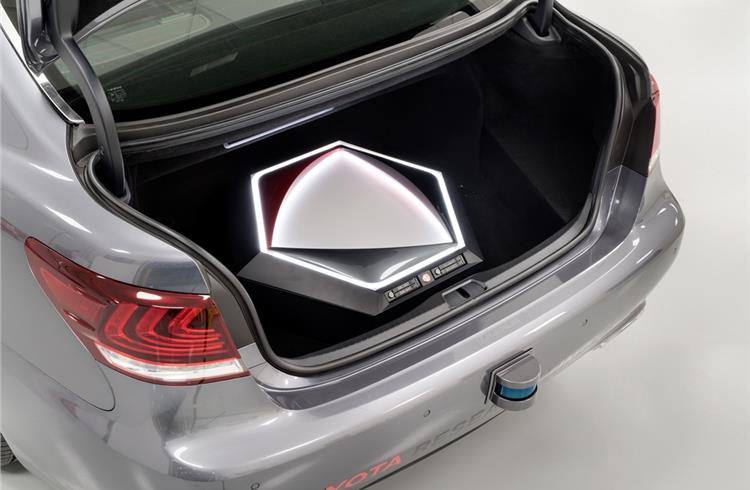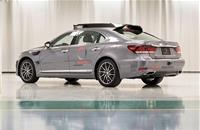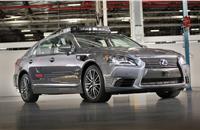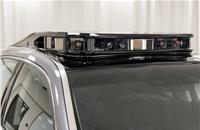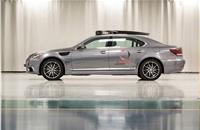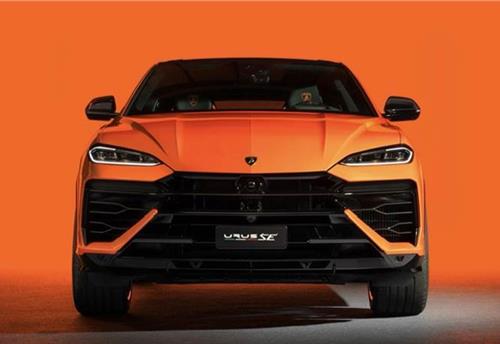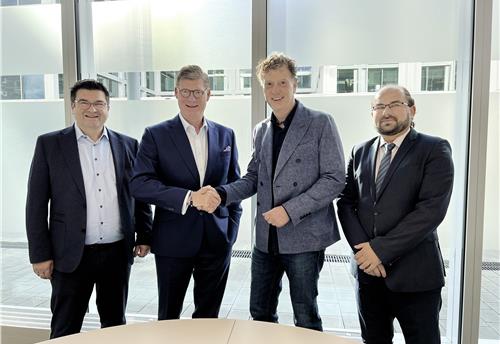Toyota to showcase automated research vehicle at CES 2018
Toyota will showcase Platform 3.0 vehicle based on the Lexus LS 600hl, which combines technological capabilities with new harmonised styling that integrates automated vehicle technology in the LS model’s design.
Toyota Research Institute (TRI), a wholly owned subsidiary of Toyota Motor North America, is to showcase its advancement in automated driving research at CES 2018 which opens on January 7 in las Vegas.
The company will introduce a Platform 3.0 vehicle based on the Lexus LS 600hl, which it says will combine technological capabilities with new harmonised styling that will integrate automated vehicle technology in the LS model’s design.
"Our team has once again rapidly advanced our automated vehicle research capabilities. To elevate our test platform to a new level, we tapped Toyota's design and engineering expertise to create an all-new test platform that has the potential to be a benchmark in function and style," said Dr Gill Pratt, CEO , TRI and Toyota Motor Corporation (TMC) Fellow.
TRI states its approach for the development of a new research platform was based on three core principles – elevate perception capabilities to be an industry pacesetter among automated vehicles; blend the sensing equipment into the vehicle design with a distinct appearance that is sleek and elegant; package the automated vehicle technology in a manner that is easy to reproduce for building a fleet at scale.
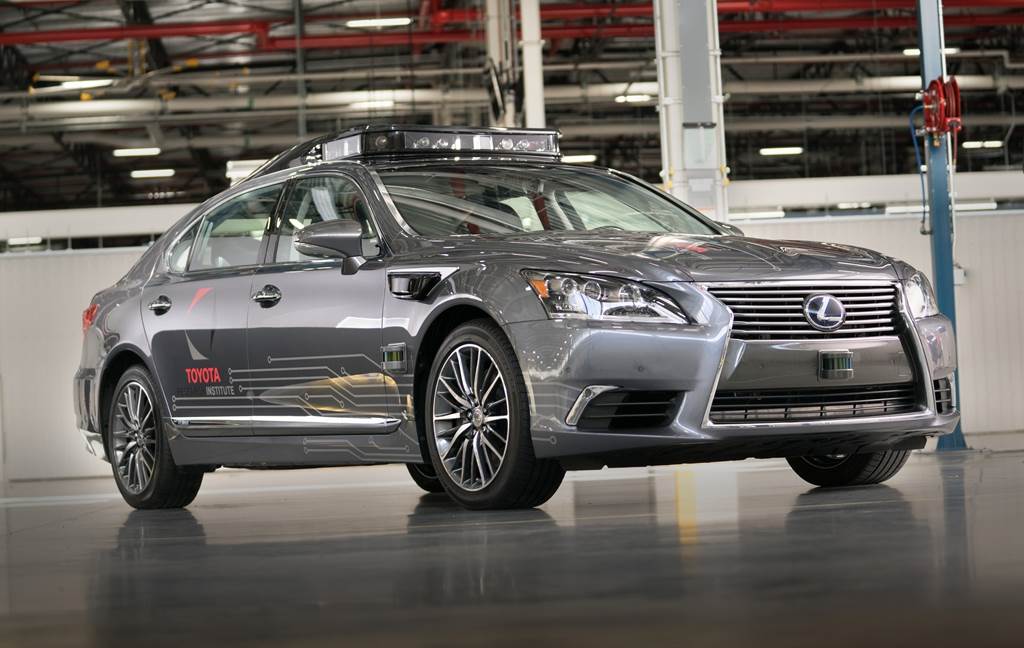
PERCEPTION TECHNOLOGY
The Platform 3.0 will represent the advancement of TRI's automated vehicle research. The experimentation has transitioned to narrowing in on a technology package with a more defined sensor configuration and level of performance that helps catapult proficiency in understanding the world around the car.
The company says the new vehicle has a sensor-rich package which makes it one of the most perceptive automated driving test cars on the road. It says the Luminar LIDAR system with a 200-metre range, which had only tracked the forward direction on TRI's previous test platform, now covers the vehicle's complete 360-degree perimeter. This is enabled by four high-resolution LIDAR scanning heads, which precisely detect objects in the environment including notoriously difficult-to-see dark objects.
The shorter-range LIDAR sensors are positioned low on all four sides of the vehicle ― one in each front quarter panel and one each on the front and rear bumpers. These can detect low-level and smaller objects near the car, like children and debris in the roadway. TRI says the new platform remains flexible for incorporating future breakthrough technology as it becomes available.

DESIGN
TRI engaged the expertise of CALTY Design Research in Ann Arbor, Michigan and engineers at Toyota Motor North America Research and Development (TMNA R&D) to compact and conceal the sensors and cameras. They created a new rooftop weather and temperature proof panel, with cleverly using available space in the sunroof compartment for minimising the overall height. TRI says this ingenuity eliminates the look of equipment as bolt-on appendages and replaces the ‘spinning bucket’ LIDAR sensor which has historically characterised autonomous test vehicles.
CALTY designed the confident image of the rooftop panel, defined as intelligent minimalism, which was inspired by off-road motorcycle helmets. The forward area has a crisp technical look that becomes more fluid and aerodynamic toward the rear of the car, unifying with the contour lines of the LS. The panel is embellished with chrome trim that runs along the side where it meets the roofline.
"Automotive designers' roles have been pivoting toward thinking deeper and greater on how to design and apply automated driving technology for drivers and passengers," said Scott Roller, senior lead designer at CALTY Design Research who worked on the project. "It's exciting to integrate the components in harmony with the car's design."
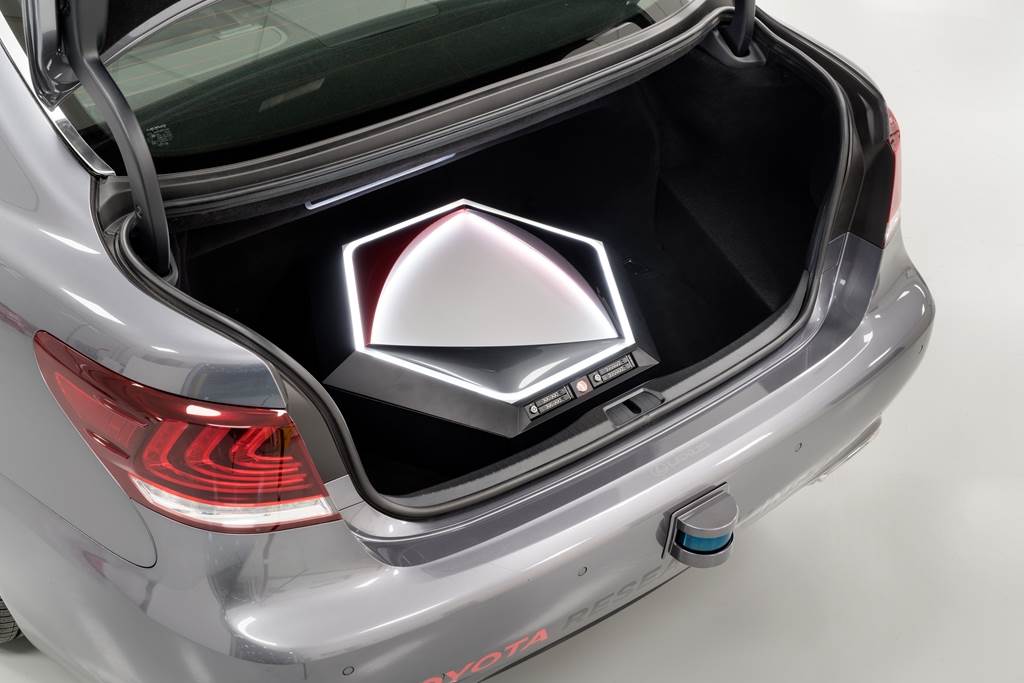
TRI says the vehicle's computational architecture for operating the automated vehicle components, which previously consumed nearly all trunk space, now has been consolidated. The electronics infrastructure and wiring is condensed into a small box exquisitely adorned with an LED-lit TRI logo.
PRODUCTION
TRI says the production of Platform 3.0 vehicle will begin in the first half of CY2018 at the Prototype Development Centre at TMNA R&D headquarters in Michigan. The centre has expertise in low volume, specialised production, will create Platform 3.0 cars from stock Lexus LS models.
Initially the company says the production volume is intentionally kept low which will allow for continued flexibility given the pace at which TRI has progressed in updating its test platform. Toyota states there have been three major updates, including two new generation test models, in less than a year, and it anticipates continued rapid developments.
A share of the new test vehicles will be assembled with the dual cockpit control layout which TRI debuted last year. This arrangement is for testing TRI's Guardian approach to automated driving – experimenting with effective methods to transfer vehicle control between the human test driver and the automated system while maintaining a safety driver as a backup.
TRI says the single cockpit vehicles, like the one on display at CES, are used to test Chauffeur, which is its approach to full vehicle automation.
RELATED ARTICLES
Lamborghini unveils Urus SE ahead of Auto China 2024
Electric-only range of 60km helps reduce emissions by 80%.
ZF to display next-gen e-axle for low-floor city buses at Busworld Turkiye 2024
The AxTrax 2 LF is available with a continuous output of up to 360 kW and a peak torque of up to 37,300 Nm.
Daimler Buses and BMZ Poland to develop next-gen NMC4 electric bus batteries
The new battery generation NMC4 – succeeding the current NMC3 technology – will combine high energy density, resulting i...





 By Autocar Pro News Desk
By Autocar Pro News Desk
 05 Jan 2018
05 Jan 2018
 4320 Views
4320 Views



